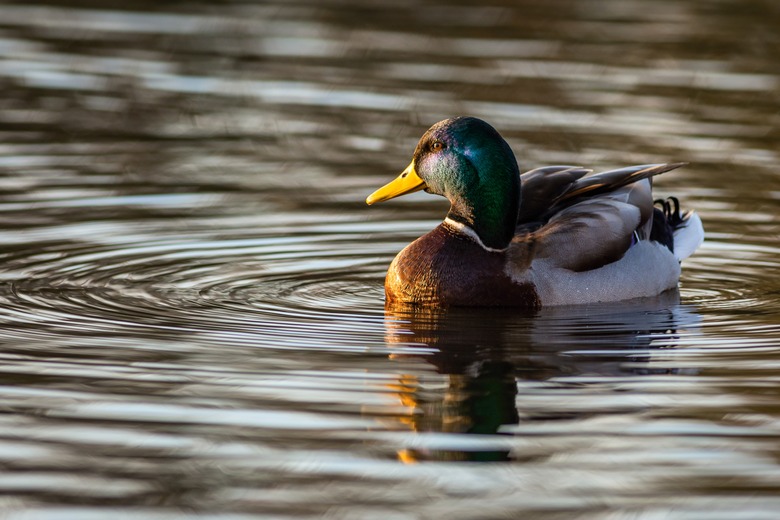How To Tell A Drake From A Duck
A drake is simply a male duck of any of the 17 duck breeds recognized by the American Poultry Association. The female is called a hen, or many times, she is just referred to as a duck, which makes any such duck discussions confusing. Identifying the drake and duck differences is often as simple as looking for the drake's characteristic curled tail feathers and color differences. Identifying ducklings is a bit tougher because they haven't yet developed their curl feathers. In duck breeds that do not develop curled tail feathers at all, other characteristics can help to tell drakes from hens.
Look for curled tail feathers
Look for curled tail feathers
The easiest, fastest way to distinguish drakes from hens is to look at their tail feathers. In most duck breeds, drakes have curled, or upward-curved, feathers at the top of their tail. The curved feather or feathers typically appear when drakes are around 8 to 12 weeks old, although it can occur as early as 6 weeks of age. This is the same time that drakes get their adult plumage, so if your ducks still have their downy duckling feathers, don't expect to see the telltale curved tail feathers yet.
Compare color for drake and duck difference
Compare color for drake and duck difference
Like many bird species, male ducks are usually more colorful than female ducks, and their colors intensify during mating season. For example, mallards, the most common United States duck, are easy to sex (that is, to differentiate between males and females) because the drakes have a green head all year that becomes shiny, bright green during mating season. Females are attracted to their bright colors, but it is also believed that mallard drakes use their color to divert predators away from the nest. Mallard hens, on the other hand, are shades of brown so they can blend in with their nest and keep their eggs safe.
Although nearly all domestic ducks are descendants of mallards, not all duck species' drakes have such obviously different plumage as mallards. In these duck breeds, drakes usually have other color indicators that vary by breed. Welsh harlequin drakes, for instance, have bright orange legs and orange-yellow bills, while hens of the breed have legs and bills that are dark greenish-gray. To use color reliably as a drake and duck differentiator, you need to know the breed of the duck and how that breed's drakes and hens differ by color.
Listen for different voices
Listen for different voices
People are often unaware that only female ducks have the characteristic "quack quack" call. Drakes have a lower, raspier, almost hoarse call that they don't use that often. Hens are much louder and noisier because they quack often. In fact, many experts consider the duck's call (voice) to be the most reliable of the drake and duck differences.
Some duck breeds, like all-white Pekins, for example, have no difference in coloration between drakes and hens, and while nearly all drakes grow curly tail feathers, they may lose them when they molt. So, depending on the time of year, you may assume you're seeing a hen when in reality, you're looking at a drake without his characteristically curled tail feathers.
A duck's call, however, doesn't change with the seasons. Whether it's mating time or not, hens are much louder and are more distinctive and relentless quackers than drakes.
Checking for duckling sex
Checking for duckling sex
Regardless of duck breeds, most duckling types are lookalike puff balls of downy feathers. They aren't mature enough to develop their adult voice or their curled tail feathers, so the only reliable way to sex ducklings is by vent checking. In all duck breeds, their sex organs are housed in their vents, or anal openings. You can permanently injure ducklings if you don't know how to properly check a duck's vent, however, so vent checking should only be done by a vet or someone who learned from a vet about how to do vent checking properly.
